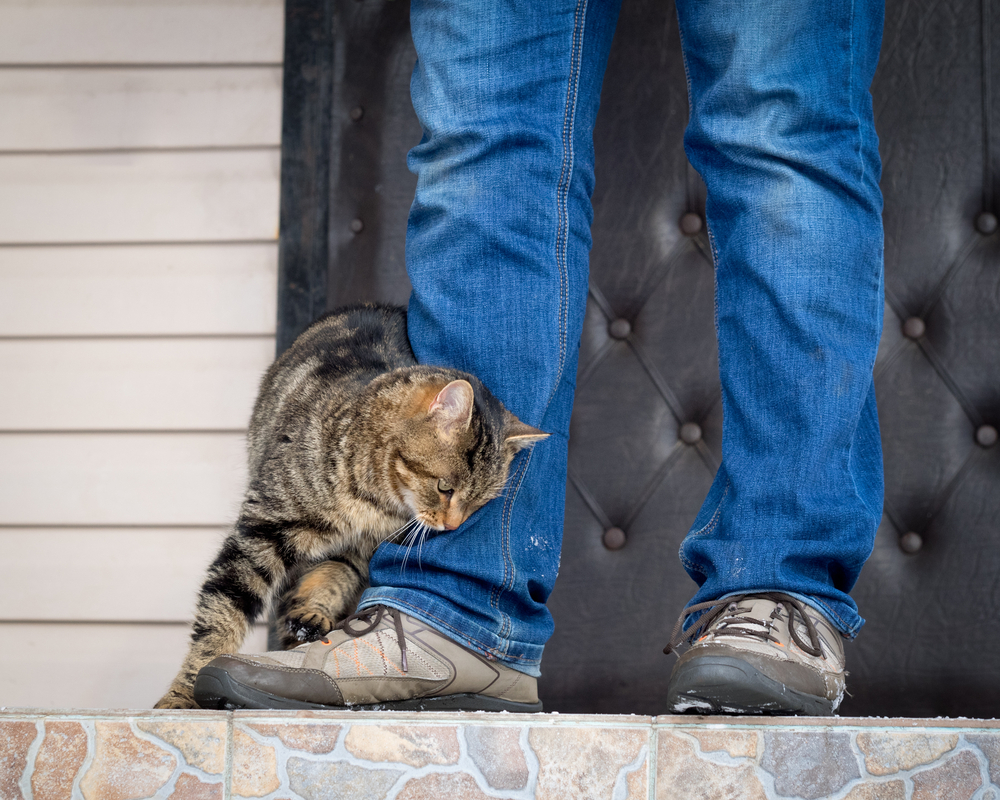Tortie and Brutus are dedicated leg weavers. Fuzz is a burly 14-pound obstacle who plants herself in walkways, daring 55-year-old owner Cary Cook of Orangeville, Illinois, to trip over her. Which she does, frequently.
“They’re dangerous!” she says of her three cats, who have caused her to trip or fall more than a few times, causing bruised knees and other minor injuries.
There’s been a lot in the news lately about seniors falling when they walk their leashed dogs, but cats in the home can be hazardous, too (although they probably don’t do it deliberately). When cats get underfoot, it’s easy to stumble over them and fall.
“Cats are quiet, they’re flexible, they’re virtually invisible,” says Edward T. Creagan, M.D., an expert on healthy aging who lives with two cats himself. For those reasons, it’s important to pay attention to where cats are before getting up from a chair or getting out of bed, especially if you’re on the far side of 50 on up. If you step on your cat and trip or fall, both of you could be injured.
We’re all familiar with the feline habit of following people. If you get out of bed in the middle of the night to go to the bathroom or get a glass of water, you may not notice your kitty shadow in the dark. Then when you turn to go back, you step on the cat, you’re both startled, and down you go.
“You need to take a quick 360-degree inventory of your environment,” Dr. Creagan says. “The most dangerous room in the house is the bathroom because if you fall, nothing is soft.”
Even better, work on improving your balance. We don’t just lose our hearing as we age. The balance mechanisms of the inner ear also become compromised, making it easier and more likely for us to fall. Talk to someone at a local health club, YMCA or senior center about balance programs that may be available. A couple of half-hour sessions with a personal trainer to work on this skill can be invaluable.
What if you do trip over your cat? If you think you’re going to fall, roll. Don’t put out an arm to break your fall. That’s a good way to break an arm or wrist.
“If you’re down, don’t let anyone pick you up or move you,” Creagan says. “You should not move yourself without taking an inventory to confirm that nothing is broken or displaced.”
It’s also a good idea to carry a cellphone in the home or some type of medical alert device. That can save your life if you fall when no one’s around and you haven’t trained your cat to dial 911.
“One really needs to be mindful, not be in a hurry, because when we rush, the odds are against us,” Creagan says.
Cook has taken that advice to heart.
“I’m far more careful since I unrelatedly broke my foot,” she says. “More talking to the cats, less speed walking.”
This article was reviewed/edited by board-certified veterinary behaviorist Dr. Kenneth Martin and/or veterinary technician specialist in behavior Debbie Martin, LVT.








